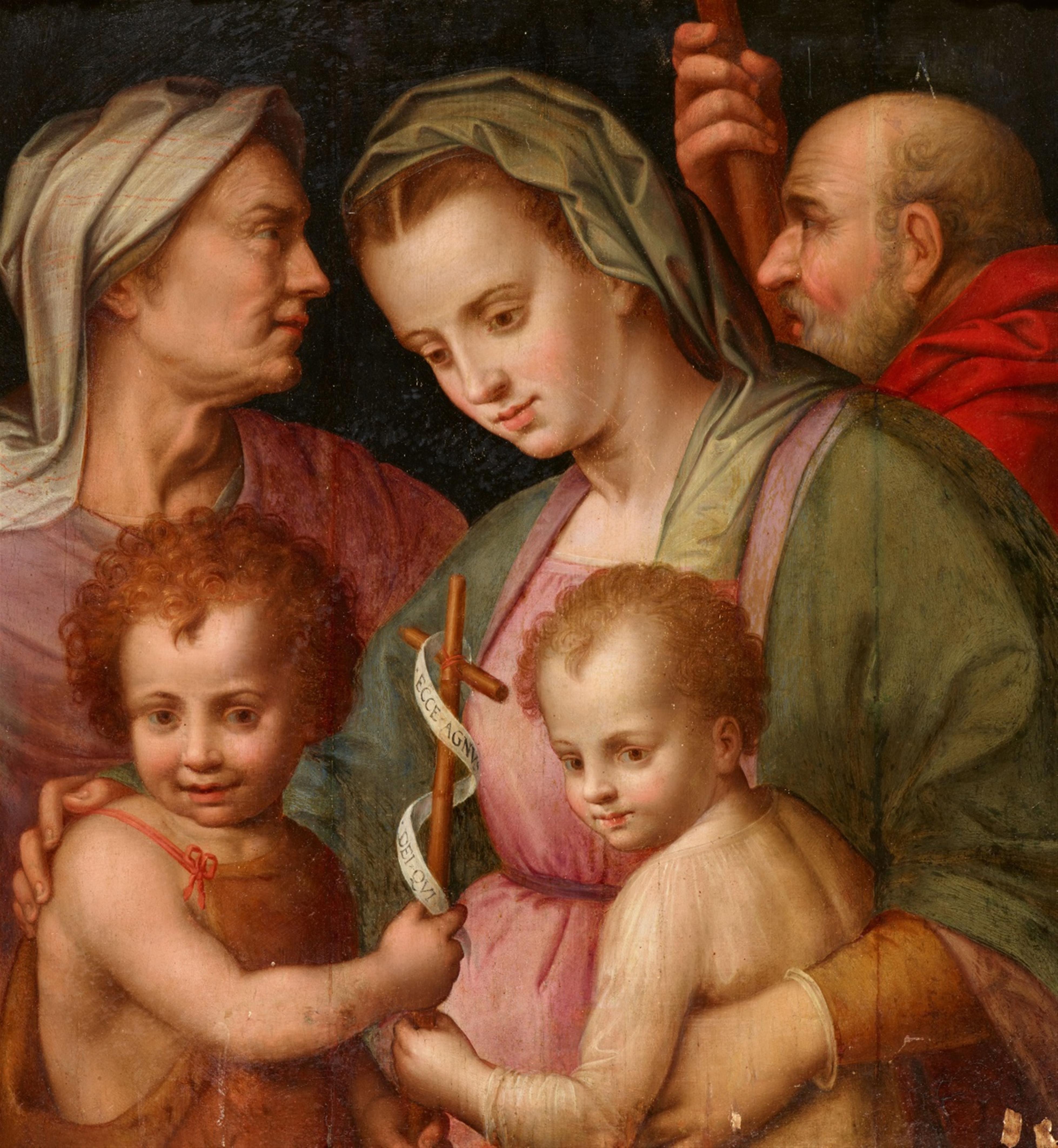Andrea Sguazzella
The Holy Family with St. Elisabeth and the Infant John the Baptist
Oil on panel. 56 x 59 cm.
The link between this composition and Andrea del Sarto's famous “Holy Family” in the Louvre is unmistakeable. However, at second glance one notices that this is not merely a copy, but a work in its own right by a painter from Sarto's immediate circle.
Andrea Sguazzella, to whom Marius Mrotzek has convincingly attributed this work, was an artist belonging to the circle surrounding the great 16th century Florentine master who has only recently gained the attention of scholars (see Nesi, op. Cit.). He was among the pupils who accompanied the master to the royal court in Paris in 1518/19, and therefore witnessed the genesis of the Louvre work first-hand. The faces of Elisabeth and Joseph, in which Sarto's reception of Michelangelo's works manifests itself, are particularly significant in this painting. However, the painter of this work has placed the composition in a smaller square format and changed the position of the figures. Whereas Elizabeth and Joseph, as in Sarto's painting, are shown conversing behind Mary's back, the position occupied by St. John, and thus his relationship to Jesus and Mary, has been amended. When combined as a group of three with the children, who are both depicted holding flags bearing the cross in an allusion to Christ's Passion, Sguazzella gives his picture a different meaning. In contrast to Sarto's imposing large format work, which was designed to be viewed from the distance, this work was made as a private devotional painting.
Sguazzellas's work is painted on an oak panel, which suggests that it was created in France and not in Florence after Andrea del Sarto's death in 1630, like so many other paintings by his students. The fact that this composition is in a square format may be another argument for it being created in immediate connection with the Louvre painting in around 1519/20, because Sarto's painting was also not a tondo at first, but was only later transformed into a circular painting.
Certificate
Dr. Marius Mrotzek, Heidelberg. - Alessandro Nesi, April 2021.
Literature
For more information on this artist: A. Nesi: Andrea Sguazzella. Un dilemma sartesco, Florence 2018.

